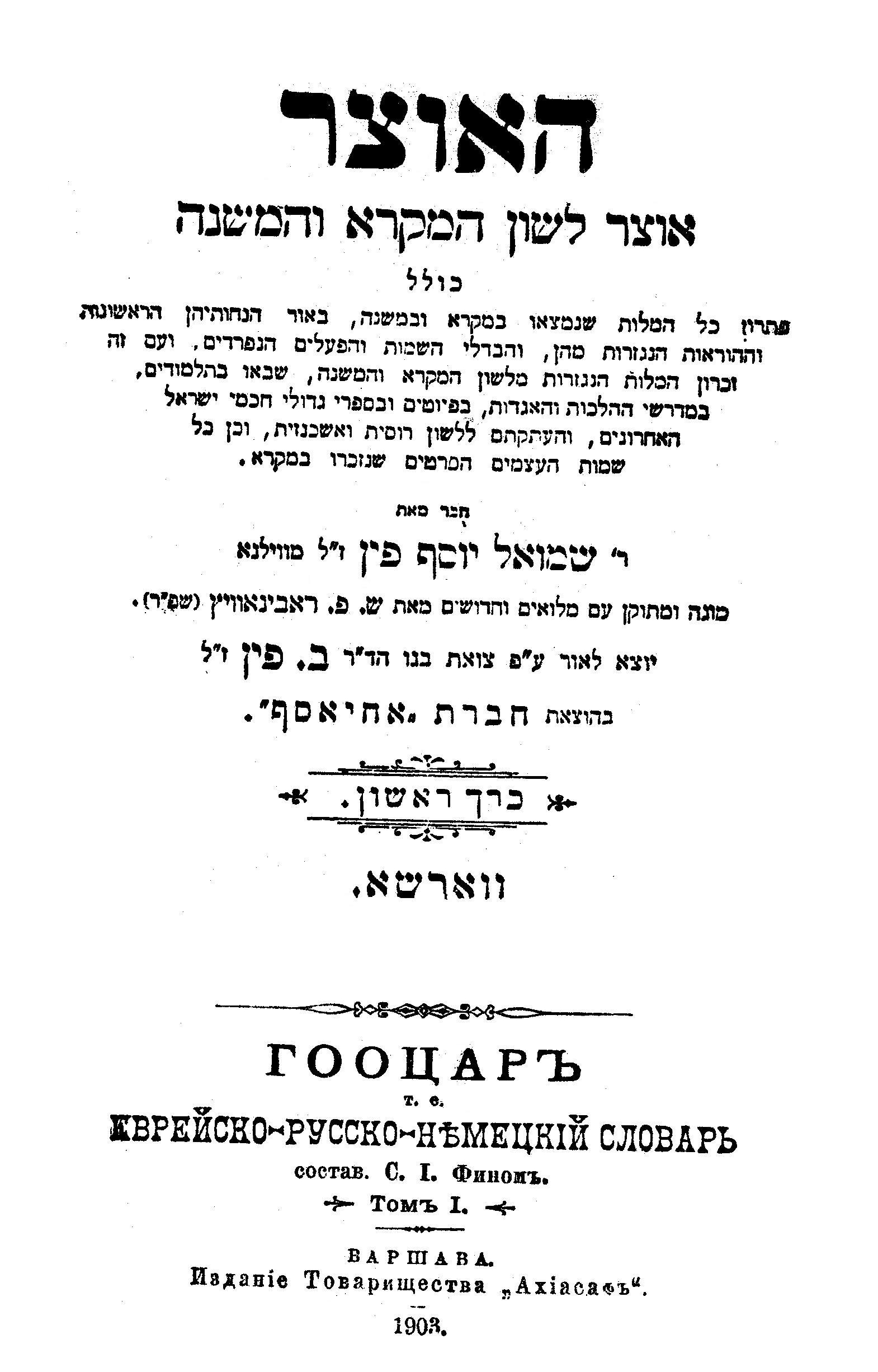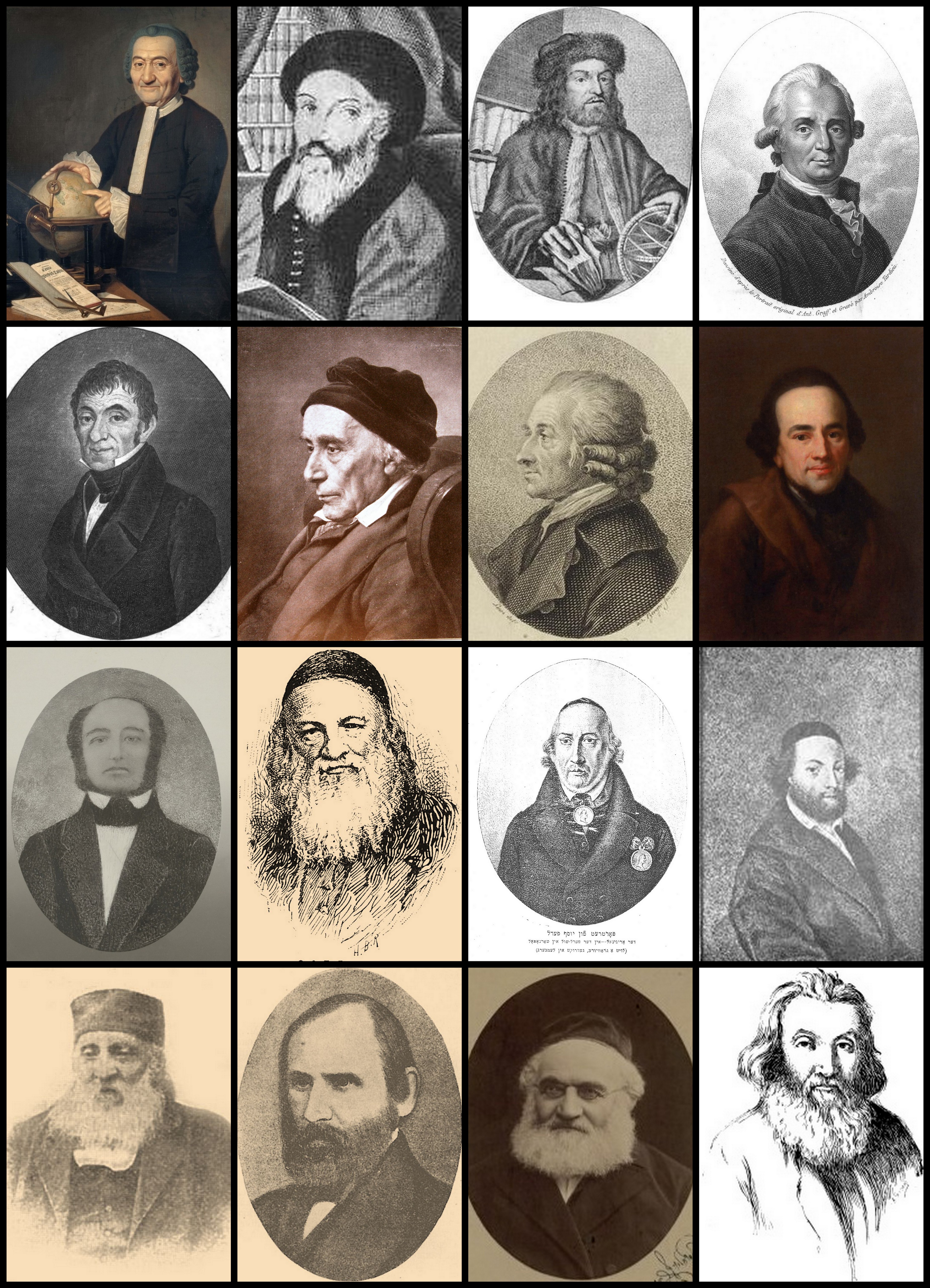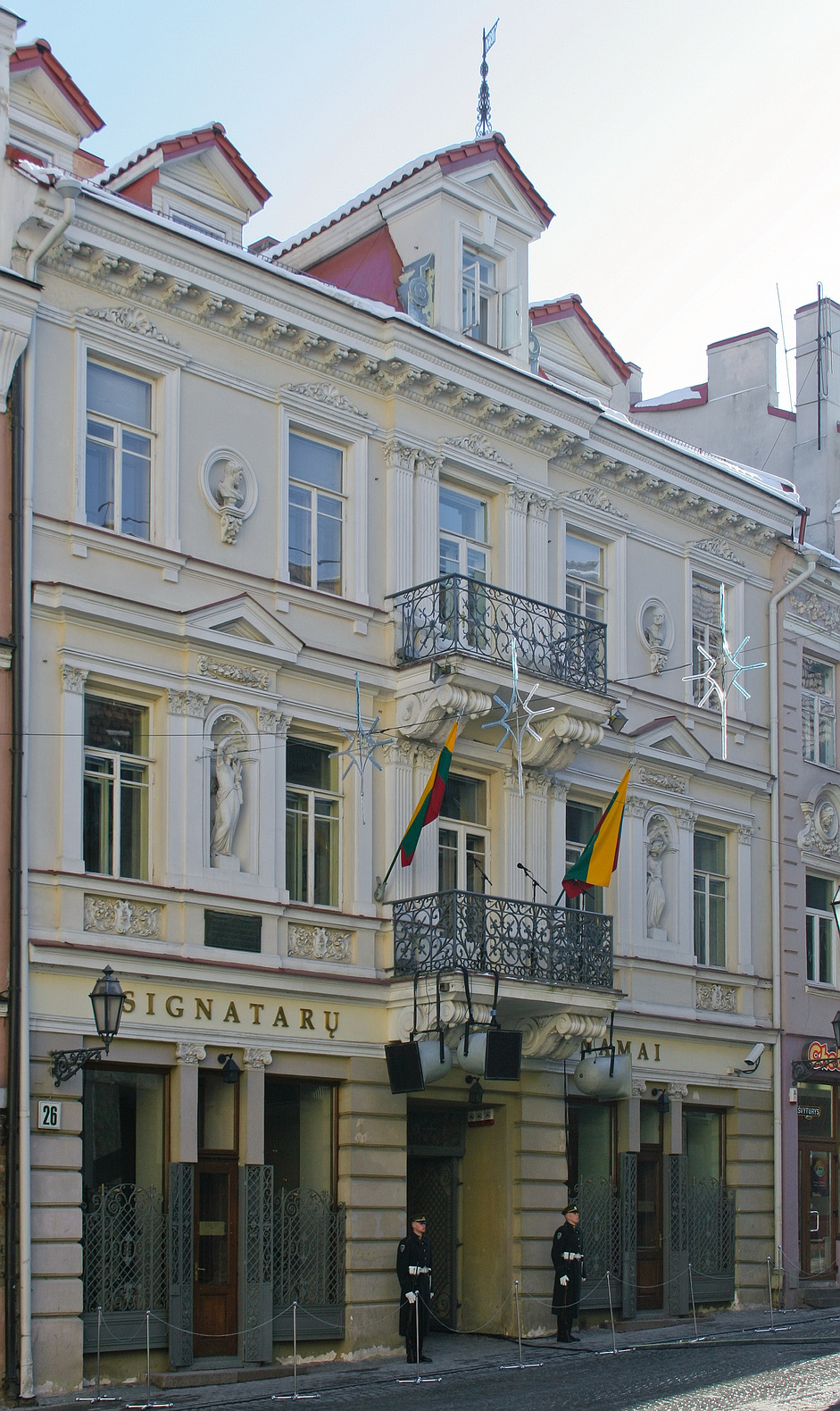|
Fuenn
Samuel Joseph Fuenn (; 15 October 1818 – 11 January 1891), also known as Rashi Fuenn () and Rashif (), was a Lithuanian Hebrew writer, scholar, printer, and editor. He was a leading figure of the eastern European Haskalah, and an early member of Ḥovevei Zion. Biography Fuenn was born in Vilna, Russian Empire, the son of merchant and Torah scholar Yitsḥak Aizik Fuenn of Grodno. Though he received a traditional religious education until the age of 17, he also acquired an extensive general knowledge of German literature and other secular subjects, and became proficient in Russian, French, Latin, Polish, and English. He afterwards joined Vilna's circle of young ''maskilim''. In 1848 the government appointed him teacher of Hebrew and Jewish history in the newly founded rabbinical school of Vilna. Fuenn filled this position with great distinction till 1856, when he resigned. The government then appointed him superintendent of the Jewish public schools in the district of Vilna, ... [...More Info...] [...Related Items...] OR: [Wikipedia] [Google] [Baidu] |
Benjamin Fuenn
Benjamin Isaac Fuenn (; 1848 – 12 August 1901) was a Lithuanian physician. Biography Fuenn was born in Vilna in 1848, the son of prominent ''maskil'' Samuel Joseph Fuenn. His mother died shortly after his birth in that year's cholera pandemic. Educated at the rabbinical seminary of his native city, he taught for two years, and then studied medicine, being graduated as M.D. from the University of St. Petersburg. He settled in Vilna, and devoted his professional skill to the healing of the poor. Fuenn was active in interesting the Jews in agriculture, and for three years was a trustee of a society for the assistance of Jewish immigrants to Palestine and Syria Syria ( ar, سُورِيَا or سُورِيَة, translit=Sūriyā), officially the Syrian Arab Republic ( ar, الجمهورية العربية السورية, al-Jumhūrīyah al-ʻArabīyah as-Sūrīyah), is a Western Asian country loc .... In 1898 he was one of the three elders elected to administer the a ... [...More Info...] [...Related Items...] OR: [Wikipedia] [Google] [Baidu] |
Ha-Karmel
''Ha-Karmel'' () was a Hebrew periodical, edited and published by Samuel Joseph Fuenn in Vilna from 1860 to 1880. It was one of the important forces of the Haskalah movement in the Russian Empire. History ''Ha-Karmel'' was founded by Samuel Joseph Fuenn in 1860 as a weekly, and was continued as such (with some interruptions) until 1871. Eight volumes appeared in these eleven years, of which volumes 1–3 have supplements in Russian. It then became a monthly, of which four volumes appeared from 1871 to 1880, when the publication was suspended. was associated with Fuenn in the editorship.''Letters of J. L. Gordon'', no. 87, Warsaw, 1894. later assisted Fuenn in the same capacity. ''Ha-Karmel'' was more of a literary periodical and less of a newspaper than other Hebrew contemporaries like ''Ha-Maggid'' or ''Ha-Melitz'', in part because the license granted by the Tsarist regime prohibited Fuenn from publishing articles on politics. The periodical contained poetry, translations, hist ... [...More Info...] [...Related Items...] OR: [Wikipedia] [Google] [Baidu] |
Lazar Lipman Hurwitz
Lazar Lipman Hurwitz (; 1815 – 21 October 1852) was a Russian Jewish editor and writer. Biography Hurwitz was born in 1815, the grandson of Rabbi Moses ben Isaac ha-Levi Hurwitz of Krozh. He acted for many years as private instructor at Vilna, and then became teacher in a public school at Riga. Later he was appointed by the government headmaster in the rabbinical school of Vilna. With S. J. Fuenn, Hurwitz issued a periodical entitled ''Pirḥe tsafon'', devoted to Jewish history, literature, and exegesis; the first number appeared in 1841, the second in 1844. He was also the author of ''Ḥaḳirot 'al Sefer Iyyob'', studies on Job, published in the second volume of Jost's ''Tsiyyon'' (1842), and ''Korot toledot melekhet ha-shir veha-melitsah'', a history of ancient Jewish poetry Hebrew poetry is poetry written in the Hebrew language. It encompasses such things as: * Biblical poetry, the poetry found in the poetic books of the Hebrew Bible * Piyyut, religious Jewish litur ... [...More Info...] [...Related Items...] OR: [Wikipedia] [Google] [Baidu] |
Haskalah
The ''Haskalah'', often termed Jewish Enlightenment ( he, השכלה; literally, "wisdom", "erudition" or "education"), was an intellectual movement among the Jews of Central and Eastern Europe, with a certain influence on those in Western Europe and the Muslim world. It arose as a defined ideological worldview during the 1770s, and its last stage ended around 1881, with the rise of Jewish nationalism. The ''Haskalah'' pursued two complementary aims. It sought to preserve the Jews as a separate, unique collective, and it pursued a set of projects of cultural and moral renewal, including a revival of Hebrew for use in secular life, which resulted in an increase in Hebrew found in print. Concurrently, it strove for an optimal integration in surrounding societies. Practitioners promoted the study of exogenous culture, style, and vernacular, and the adoption of modern values. At the same time, economic production, and the taking up of new occupations was pursued. The ''Haskalah ... [...More Info...] [...Related Items...] OR: [Wikipedia] [Google] [Baidu] |
Vilna Rabbinical School And Teachers' Seminary
The Vilna Rabbinical School and Teachers' Seminary was a controversial Russian state-sponsored institution to train Jewish teachers and rabbis, located in Vilna, Russian Empire. The school opened in 1847 with two divisions: a rabbinical school and a teachers' seminary. The Rabbinical School was closed in 1873 and the Teachers' Seminary closed in 1914. The school taught secular studies, unlike the traditional cheders and yeshivas. This new curriculum, as well as the government control, made the school "unpopular." Curriculum The school taught German language, Hebrew language, Hebrew Bible, Talmud, algebra, geometry, trigonometry, physics, astronomy, world history, Russian history, Russian language, geography, and handwriting and drawing. History Rabbi Yisroel Salanter, a major figure of the Mussar movement who then lived in Vilna, was pressured to lead the seminary. Rather than accept the position, Salanter fled to Kovno, even though Rabbi Yitzhak of Volozhin encouraged him to t ... [...More Info...] [...Related Items...] OR: [Wikipedia] [Google] [Baidu] |
Vilnius
Vilnius ( , ; see also other names) is the capital and largest city of Lithuania, with a population of 592,389 (according to the state register) or 625,107 (according to the municipality of Vilnius). The population of Vilnius's functional urban area, which stretches beyond the city limits, is estimated at 718,507 (as of 2020), while according to the Vilnius territorial health insurance fund, there were 753,875 permanent inhabitants as of November 2022 in Vilnius city and Vilnius district municipalities combined. Vilnius is situated in southeastern Lithuania and is the second-largest city in the Baltic states, but according to the Bank of Latvia is expected to become the largest before 2025. It is the seat of Lithuania's national government and the Vilnius District Municipality. Vilnius is known for the architecture in its Old Town, declared a UNESCO World Heritage Site in 1994. The city was noted for its multicultural population already in the time of the Polish–Li ... [...More Info...] [...Related Items...] OR: [Wikipedia] [Google] [Baidu] |
German Literature
German literature () comprises those literary texts written in the German language. This includes literature written in Germany, Austria, the German parts of Switzerland and Belgium, Liechtenstein, Luxembourg, South Tyrol in Italy and to a lesser extent works of the German diaspora. German literature of the modern period is mostly in Standard German, but there are some currents of literature influenced to a greater or lesser degree by dialects (e.g. Alemannic). Medieval German literature is literature written in Germany, stretching from the Carolingian dynasty; various dates have been given for the end of the German literary Middle Ages, the Reformation (1517) being the last possible cut-off point. The Old High German period is reckoned to run until about the mid-11th century; the most famous works are the ''Hildebrandslied'' and a heroic epic known as the '' Heliand''. Middle High German starts in the 12th century; the key works include '' The Ring'' (ca. 1410) and the poem ... [...More Info...] [...Related Items...] OR: [Wikipedia] [Google] [Baidu] |
Hebrew Literature
Hebrew literature consists of ancient, medieval, and modern writings in the Hebrew language. It is one of the primary forms of Jewish literature, though there have been cases of literature written in Hebrew by non-Jews. Hebrew literature was produced in many different parts of the world throughout the medieval and modern eras, while contemporary Hebrew literature is largely Israeli literature. In 1966, Agnon won the Nobel Prize for Literature for novels and short stories that employ a unique blend of biblical, Talmudic and modern Hebrew, making him the first Hebrew writer to receive this award. Ancient era Literature in Hebrew begins with the oral literature of the ' (), "The Holy Language", since ancient times and with the teachings of Abraham, the first of the biblical patriarchs of Israel, c. 2000 BCE . Beyond comparison, the most important work of ancient Hebrew literature is the Hebrew Bible (Tanakh). The Mishna, compiled around 200 CE, is the primary rabbinic codif ... [...More Info...] [...Related Items...] OR: [Wikipedia] [Google] [Baidu] |
Weekly Newspaper
A weekly newspaper is a general-news or Current affairs (news format), current affairs publication that is issued once or twice a week in a wide variety broadsheet, magazine, and electronic publishing, digital formats. Similarly, a biweekly newspaper is published once every two weeks. Weekly newspapers tend to have smaller circulations than daily newspapers, and often cover smaller territories, such as one or more smaller towns, a rural county, or a few neighborhoods in a large city. Frequently, weeklies cover local news and engage in community journalism. Most weekly newspapers follow a similar format as daily newspapers (i.e., news, sports, obituary, obituaries, etc.). However, the primary focus is on news within a coverage area. The publication dates of weekly newspapers in North America vary, but often they come out in the middle of the week (Wednesday or Thursday). However, in the United Kingdom where they come out on Sundays, the weeklies which are called ''Sunday newspape ... [...More Info...] [...Related Items...] OR: [Wikipedia] [Google] [Baidu] |
Modern Language
A modern language is any human language that is currently in use. The term is used in language education to distinguish between languages which are used for day-to-day communication (such as French and German) and dead classical languages such as Latin and Classical Chinese, which are studied for their cultural or linguistic value. SIL Ethnologue defines a living language as "one that has at least one speaker for whom it is their first language" (see also Language § Linguistic diversity). The teaching of modern languages Modern languages are taught extensively around the world; see second language acquisition. English is taught as a second or foreign language in many countries; see English language learning and teaching. Asia In Asia, most children learn an official version of their native language or learn a local major lingua franca (for example Mandarin, Hindustani) in Asia-Pacific countries, and all subjects are taught in that lingua franca language except fo ... [...More Info...] [...Related Items...] OR: [Wikipedia] [Google] [Baidu] |
Hebrew
Hebrew (; ; ) is a Northwest Semitic language of the Afroasiatic language family. Historically, it is one of the spoken languages of the Israelites and their longest-surviving descendants, the Jews and Samaritans. It was largely preserved throughout history as the main liturgical language of Judaism (since the Second Temple period) and Samaritanism. Hebrew is the only Canaanite language still spoken today, and serves as the only truly successful example of a dead language that has been revived. It is also one of only two Northwest Semitic languages still in use, with the other being Aramaic. The earliest examples of written Paleo-Hebrew date back to the 10th century BCE. Nearly all of the Hebrew Bible is written in Biblical Hebrew, with much of its present form in the dialect that scholars believe flourished around the 6th century BCE, during the time of the Babylonian captivity. For this reason, Hebrew has been referred to by Jews as ''Lashon Hakodesh'' (, ) since ... [...More Info...] [...Related Items...] OR: [Wikipedia] [Google] [Baidu] |
English Language
English is a West Germanic language of the Indo-European language family, with its earliest forms spoken by the inhabitants of early medieval England. It is named after the Angles, one of the ancient Germanic peoples that migrated to the island of Great Britain. Existing on a dialect continuum with Scots, and then closest related to the Low Saxon and Frisian languages, English is genealogically West Germanic. However, its vocabulary is also distinctively influenced by dialects of France (about 29% of Modern English words) and Latin (also about 29%), plus some grammar and a small amount of core vocabulary influenced by Old Norse (a North Germanic language). Speakers of English are called Anglophones. The earliest forms of English, collectively known as Old English, evolved from a group of West Germanic ( Ingvaeonic) dialects brought to Great Britain by Anglo-Saxon settlers in the 5th century and further mutated by Norse-speaking Viking settlers starting in ... [...More Info...] [...Related Items...] OR: [Wikipedia] [Google] [Baidu] |




